home
Nederlands
next
Portfolio
Noise generator
Purpose
Listening to classical music while traveling on public transport is a waste of time due to the
noisy environment (80 to 90 dBA).
THe main reason why people listen to some kind of music in these circumstances is to isolate oneself in order to read, daydream or slumber.
The combination of earplugs and an audio noise generator is very effective way
to isolate oneself from traffic noise (and worse) without inflicting hearing damage.
It is well know that the writer Simon Vestdijk used a Nilfisk vacuumcleaner
for simular purposes. It is on display in the
Letterkundig Museum
in The Hague.
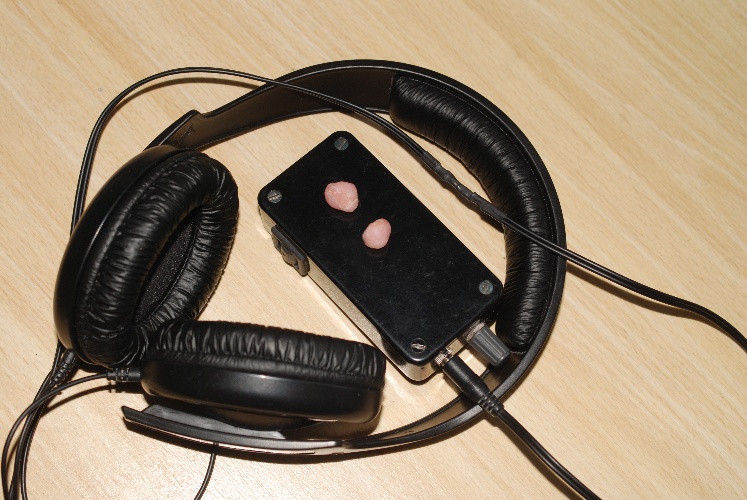
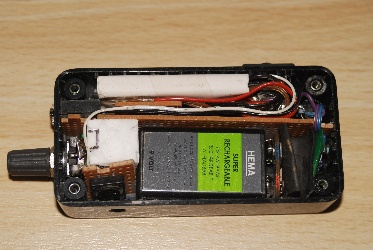
Theory
By shifting a bit pattern (to the left, say) and filling
the empty place (at the right) by a suitable value, for instance the XOR value
(*)
of the first and the last bit before shifting, we can get a
maximum length series
. That is a series of numbers that contains all possible values except zero,
or we get a series of zeros. An example:
f[n+1]=((2*f[n])&15)+(XOR(f[n]&8,f[n]&1)?1:0)
0001=01 or 0000=00
0011=03 or 0000=00
0111=07 or 0000=00
1111=15 or 0000=00
1110=14 or 0000=00
1101=13 or 0000=00
1010=10 or 0000=00
0101=05 or 0000=00
1011=11 or 0000=00
0110=06 or 0000=00
1100=12 or 0000=00
1001=09 or 0000=00
0010=02 or 0000=00
0100=04 or 0000=00
1000=08 or 0000=00
0001=01 or 0000=00
et cetera
(*) The truth table for the eXclusive-OR function is:
XOR(0,0)=0
XOR(0,1)=1
XOR(1,0)=1
XOR(1,1)=0
The non-trivial series has an interesting property.
Its autocorrelation function is a 0, except for one point:
∫ (f(t-τ)-<f>)*(f(t)-<f>)dt = C*δ(τ) where <f> denotes the mean value of f().
In other words the series is a very coarse pseudo-random function.
In 1995 I had access to a state-of-the-art Sun workstation and I used
that to evaluate a 31 bit variant of the example above.
Next I designed an implementation in COS/MOS logic.
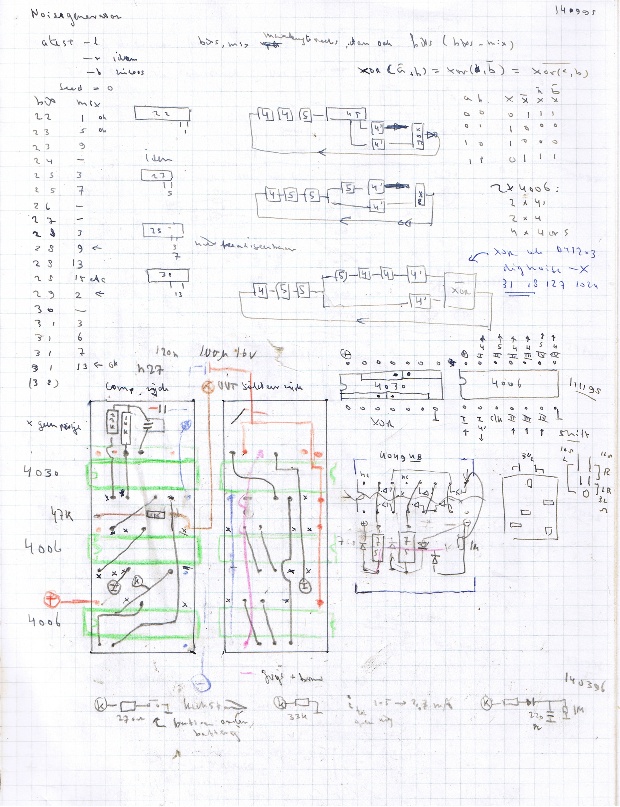
Electronics
The noise generator consists of 4 COS/MOS chips and a few passive components.
Power is supplied by a 9 V rechargable battery. On
power on
a small capacitor is
charged over a LED in series with a Zener diode. The LED gives a short
flash when the battery is sufficiently charged.
If the noise generator fails to start (see above), it is kick started again.
We needed
•
1 CD4030 quad exclusive-or gate
•
2 CD4006 18-stage static shift registers
•
1 CD4049 inverting hex buffer
Two XOR gates are used to make a NOT-XOR gate.
The other two were used for the clock generator.
The clock frequency is about 200 kHz. So with a cyclelength of 2^31 - 1
steps the noise pattern is repeated every 3 hours.
The shift registers were rearranged into a 14-, 17- and 4-bit shift register.
The six stages of the 4049 were arranged in parallel to provide the
low impedance output signal. Volume is conrolled with a miniature
logarithmic potmeter.
The noise generator and amplifier
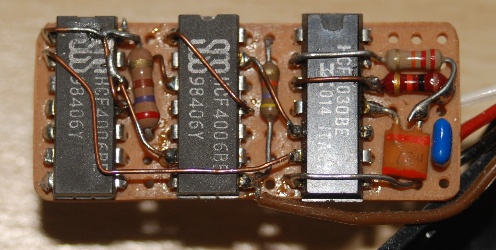
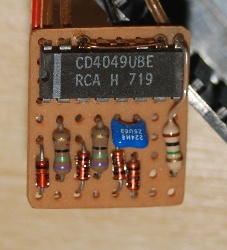
Underside of the noise generator
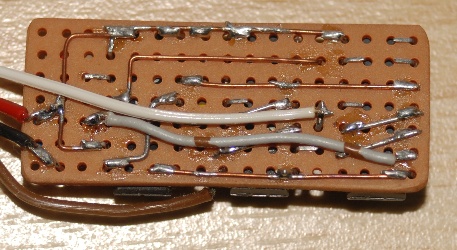
home (English)
Nederlands





